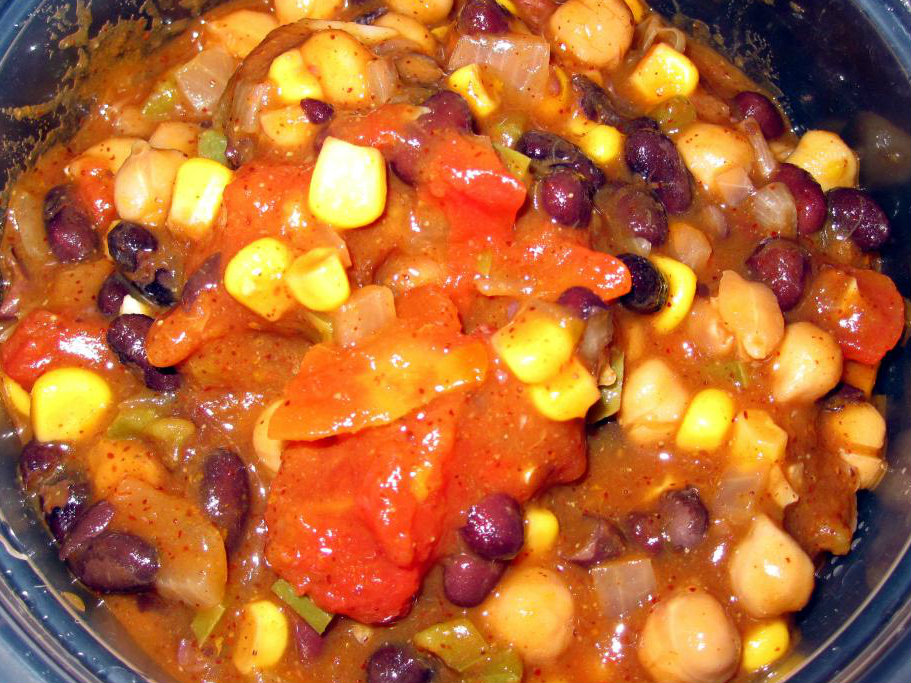My Video Interview!
I was recently interviewed by Ben of Ben’s Gluten Free & Vegan Online Food Co-op. It was my first time on camera so I was a little nervous, but I really enjoyed chatting with him and getting a chance to talk about my cooking classes and going vegan. I also demonstrate how to make one of my favorite cookies, and Gubie makes a star appearance. Click HERE to watch!
Dried Beans!

There is so much to love about beans.
They are nutritional powerhouses. Not only are they loaded with protein, fiber, and tons of vitamins and minerals; they also reduce cholesterol, control blood sugar, and have anti-cancer properties. (I aim to have at least a cup a day.)
They are widely available and incredibly versatile; you can use them in everything from soups to spreads to salads to sweets.
AND, they are ridiculously cheap.
While canned beans are great for putting a last-minute meal together that’s inexpensive and healthful, dried beans provide even more bang for your buck, financially and nutritionally. Buying dried beans from the bulk section of the grocery store is probably the cheapest food you can buy (which is why I stock up, as you can see above) and the soaking process makes beans’ glorious nutrients more easily absorbable. Plus, there’s no denying that beans made from scratch just taste better. The process may seem time-consuming at first, but once you get the system down, you’ll realize just how easy and convenient it is.
Step 1: SOAK
Pour the dried beans into a large bowl and cover with water. Soak them for at least 8 hours. Dried beans will expand in water so make sure the water covers the beans by several inches. A good time to put your beans to soak might be either at night before bed or in the morning before heading off to work.
Step 2: DRAIN & REFRESH
Drain the beans from the soaking water and transfer them into a large pot. Fill the pot with enough fresh water to cover the beans by at least 3 inches. Note: People often complain that beans make them undesirably musical (if you catch my drift). This is why we soak and drain. Soaking the dried beans in water allows them to release the indigestible sugars that cause people to feel gassy. When you discard the soaking water, you are also discarding the beans’ gas-causing elements.
Step 3: COOK
Bring the pot to a boil and then reduce the heat and cook at a simmer until the beans are tender. See time chart below.
Step 4: STORE
Here’s my favorite part: when the beans are done, whatever you don’t use right away can be stored in the fridge for up to a week or in the freezer for several months. What I do is make a very large batch of beans and then store recipe-size portions in zip-lock bags in the freezer. This way, they are there whenever I need them and I can get all of the health and cost benefits of making my own beans without having to spend hours ahead of time soaking and cooking them each time I want beans.
BEAN COOKING TIME
Black – 1.5 hours
Black-eyed peas* – 1 – 1.5 hours
Cannellini – 1 hour
Fava, skinned – 1 hour
Garbanzo – 1.5 – 2 hours
Kidney, red – 1 – 1.5 hours
Lentils* – 30 – 45 minutes
Lima – 1 hour
Mung – 1 hour
Navy – 1 – 1.5 hours
Pinto – 1 – 1.5 hours
Split peas, green* – 30 – 45 minutes
* These dried beans don’t need to be soaked beforehand. You can just skip ahead to Step 3.
Read more about the health benefits of beans HERE.
Disease Prevention for Breakfast
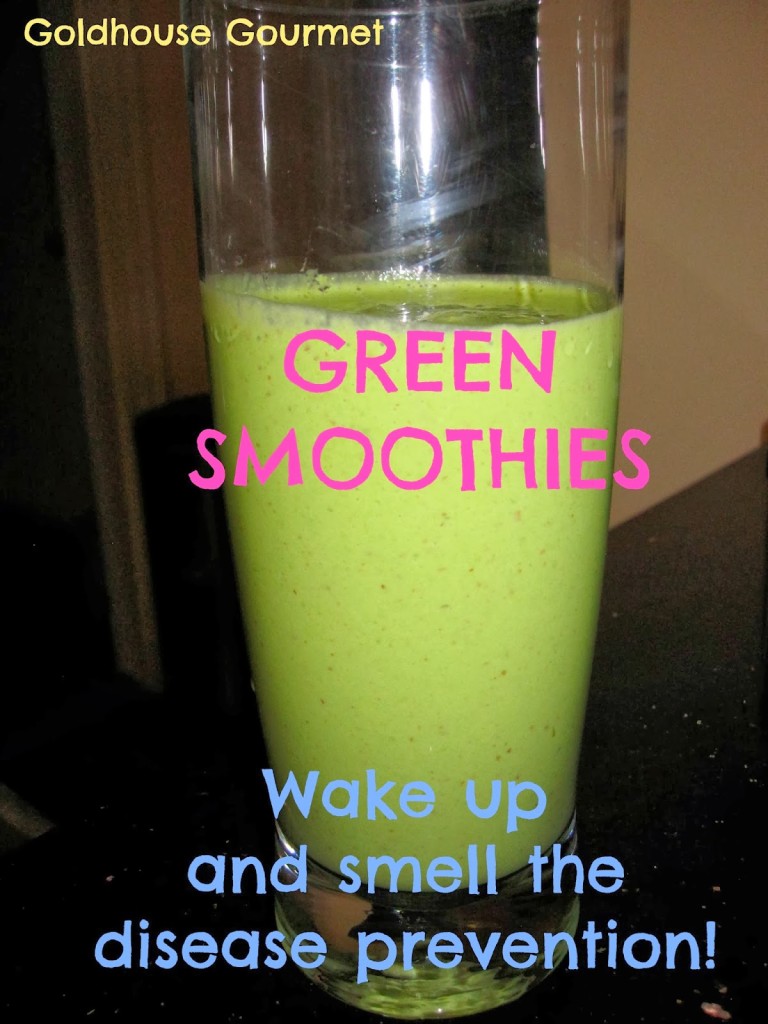
Google image search “American breakfast” and you’ll see a pretty sorry state of affairs. You’ll see bacon strips, scrambled eggs, fried eggs, sausage, fried hash browns, fried ham, pancakes with butter, waffles with butter, toast with butter, buttered croissants, bagels with cream cheese… you get the idea. Google image search “healthy american breakfast” and you’ll see practically the same thing. You’ll get a couple more shots of orange juice (which by definition has been entirely striped of fiber) and some shots of highly refined cereal floating in bowls of dairy milk, but essentially the same thing. No greens, almost no fresh fruit, and A LOT of meat, dairy, eggs, refined flour, refined sugar, and salt.
This is absurd when diet is responsible for four out of the top five leading causes of death in America. As Dr. Mark Hyman explains, “the research clearly shows that changing how we live is a much more powerful intervention for preventing heart disease [currently the number one killer of Americans] than any medication.” The “EPIC” study published in the Archives of Internal Medicine studied 23,000 people’s adherence to 4 simple behaviors (not smoking, exercising 3.5 hours a week, eating a healthy diet [fruits, vegetables, beans, whole grains, nuts seeds, and limited amounts of meat], and maintaining a healthy weight. In those adhering to these behaviors, 93% of diabetes, 81% of heart attacks, 50% of strokes, and 36% of all cancers were prevented.
We know Americans don’t want to suffer and die from these diseases; after all, we spend an exorbitant amount of our personal and national finances on prescription drugs, medical procedures, and research to treat them. So why do we continue to eat in a way that contributes to the very diseases we are spending so much money to treat? It’s as if we believe our only chance at good health is to sit around and wait for cures to be discovered. This hopelessness and helplessness leaves us completely dependent on doctors, hospitals, drug companies, and research labs–which is very nice for them and their wallets but not so nice for our health, our wallets, or the country.
Why have so many of us been led to believe we have no power over our own health? Why are too many of us still tragically unaware (as I was for so long) of the role diet plays in determining whether or not we get cardiovascular disease, cancer, osteoporosis, and a number of other diseases?
In hindsight, it would be way too easy for me to say, “well, the information is out there. If people really cared about their health, they wouldn’t be eating meat, dairy, and eggs.” But I don’t think it’s that simple. While, indeed, research has proven time and time again that animal products promote disease while fruits and vegetables prevent disease, not many people know this. We hear mixed messages from advertisements (“Milk. It Does a Body Good.”), from fad diets (Atkins), from our parents (who were misled by their parents), and from myths passed amongst our peers (“Humans are meant to eat animals. Look at our pointy fangs!” ). Most insidious, though, are the messages we receive from the medical industry itself which consistently plays down the power of eating for disease prevention.
Why are doctors all too eager to write us prescriptions for high cholesterol, screen us repeatedly with expensive medical equipment for cancer (which is NOT prevention, just detection), perform surgeries to unclog our hearts, or put us through chemotherapy, but they’ll rarely advise us to drastically change our diets? I find the explanation that “most people refuse to make drastic lifestyle changes” to be both patronizing and false. Perhaps some people may refuse to make changes in their diet, but we all deserve to make an informed choice. Plus, I believe most people would prefer not to spend gobs of money unnecessarily, or get their chest cut open unnecessarily, or get cancer and endure chemo unnecessarily, or DIE unnecessarily. Based on my experience, I believe plenty of people would much prefer to make dietary changes if the truth were pushed on them even half as much as prescriptions are.
Why is the link between diet and disease so rarely mentioned?
We cannot forget that the medical industry is a business. A massive business whose tentacles reach not only doctors and hospitals but also drug companies, insurance companies, research labs, universities, supply and equipment manufacturers, marketers, lobbyists, and beyond. It is like any other business in that the goal is to make a profit. Profits, grants, funding, and salaries depend on people being sick. When people are sick, the medical industry flourishes because we require its services–researching, testing, inventing, manufacturing, and administering treatments. That’s not to say that individual people go into the medical field to prey upon sick people, but the industry at large simply does not grow and succeed when the people it is meant to serve are in good health. Telling us how to prevent diseases would make us less dependent on the medical industry’s services which means less money in their pockets. (See #3 for more on this.)
But while the medical industry makes enormous sums of money pushing treatment rather than prevention, the rest of the country suffers financially. In 2006, U.S. health spending exceeded two trillion dollars, with three-fourths of that spending directed at treating chronic diseases. Almost two-thirds of that growth in spending is attributable to Americans’ worsening health habits. A 2007 study at the Harvard Medical School found that 62% of U.S. bankruptcies were a result of medical expenses.
This is complete insanity.
What do have to show for all this money we’ve spent? What has all this money accomplished in the name of human health?
Not much.
Before 1900, very few people died of heart disease. Now it is the number one killer of Americans. In the future, it’s likely that more people will die of heart disease. According to a recent report by the American Heart Association, the prevalence of heart disease is set to increase by 10% over the next 20 years.
Similarly, while research suggests that only 5-10% percent of all cancers are hereditary–meaning that 90-95% of cancers are attributable to lifestyle factors such as diet, exercise, alcohol intake, sun exposure, etc–the World Health Organization expects cancer rates to increase by 50% by 2020.
To say I find this whole system infuriating would be a major understatement. Nothing breaks my heart more than needless suffering and that is exactly what is going on here on a massive scale. Just think about it. Animals suffer and are killed unnecessarily for humans’ appetites. Humans suffer and die from diseases caused by eating the flesh and secretions of animals. In their suffering, humans seek out cures and treatments, fueling an industry that captures or breeds animals merely to infect them with diseases, overdose them on drugs, infest them with tumors, slice open their bodies, or deprive them of their most fundamental needs. Humans pay for the drugs, which often times don’t work as expected precisely because they were tested on nonhuman animals and also because drugs, surgeries and other treatments only address symptoms of disease and not the cause. We then sit around and wait for the next cure or treatment, while we get sicker and continue practicing our habits and passing them on to our children and encouraging them amongst our peers. It’s a tragic cycle that begins with suffering and ends with suffering.
In our state of suffering we excuse the horrific practice of performing drug tests and medical experiments on living animals. We claim that it is a necessary evil, that it will benefit humanity, that fewer people will have to suffer. Even if that were all true I still believe testing on anyone–human or nonhuman–without their consent is deeply wrong.* But these claims are false. If more people are getting sicker, if more people are spending more of their savings managing chronic illness, if our country is spending more money on researching and treating preventible diseases, we cannot possibly argue we are creating less suffering. Our infliction of needless suffering on animals has caused us to suffer needlessly as well.
-Albert Einstein
* Animal research is a multi-billion dollar industry in which for-profit commercial interests have high stakes. This is one of the major reasons why the use of animals not only continues, but also is fiercely defended despite obvious limitations, angers, and the reality that it may not help our battle against human diseases, and might actually hinder it. As an example of such financial motivation for its continuance, consider for example that in 2010, The Jackson Laboratory– “a leading mammalian genetics research center– sold 2.9 million mice for a profit of $98.7 million. Investment n the procurement, handling, and upkeep of animals for labs is a highly lucrative enterprise for animal importers, breeders, dealers, cage and equipment manufacturers, feed producers, and drug companies. (See NEAVS for more information.)
http://www.fundamentalsofhealth.com/sad1.htm
http://content.healthaffairs.org/content/28/1/37.full
http://www.fi.edu/learn/heart/history/history.html
http://www.ncbi.nlm.nih.gov/pubmed/11138444
http://www.ncbi.nlm.nih.gov/pubmed/1834240
http://www.ncbi.nlm.nih.gov/pubmed/11412050
http://www.ncbi.nlm.nih.gov/pubmed/10517425
http://www.ncbi.nlm.nih.gov/pubmed/23294925
http://www.ncbi.nlm.nih.gov/pubmed/21049053
http://www.huffingtonpost.com/dr-mark-hyman/lower-your-risk-of-heart_b_300292.html
http://www.sciencedaily.com/releases/2011/10/111011171553.htm
http://www.aicr.org/foods-that-fight-cancer/
http://www.cnn.com/2011/HEALTH/08/19/heart.attack.proof.diet/index.html?hpt=hp_bn6
http://well.blogs.nytimes.com/2011/01/07/nutrition-advice-from-the-china-study/
http://www.heartattackproof.com/moderation_kills.htm
http://www.ncbi.nlm.nih.gov/pubmed/20236396
http://www.ncbi.nlm.nih.gov/pmc/articles/PMC2515569/#CR35
If you really want to torture yourself and see just how much money we’re currently spending on researching cures for preventible diseases, see this NIH price list. Also, please see the links I used within the article.
Chickpea Blondies!
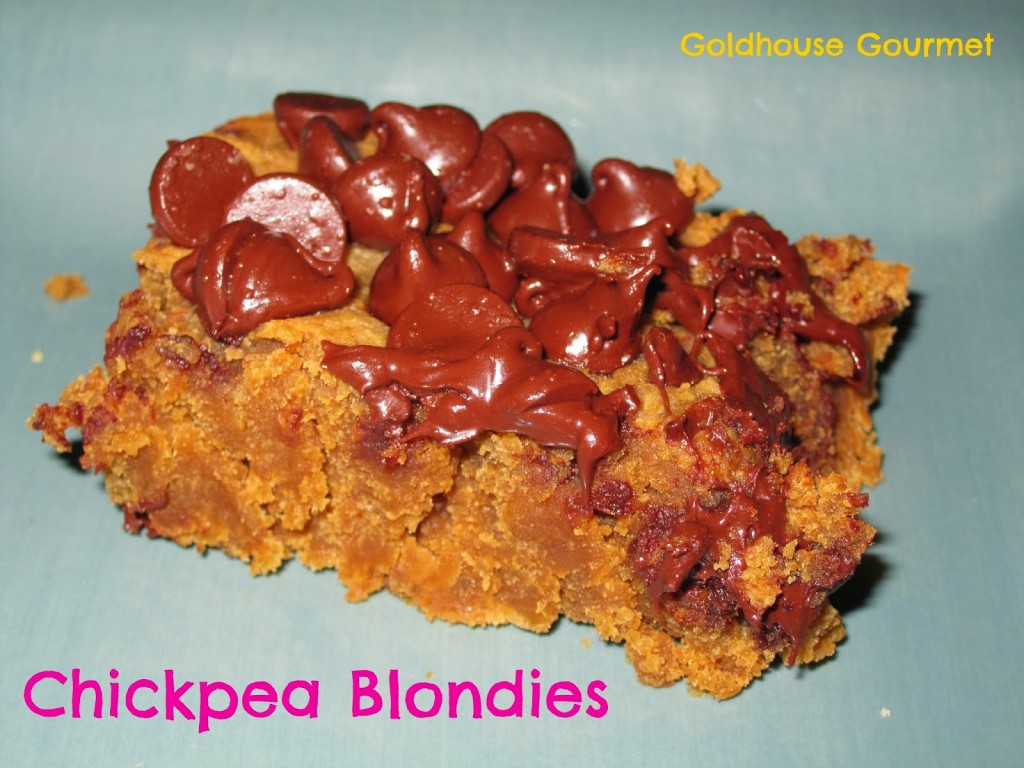
Book Recommendation: “Artisan Vegan Cheese”
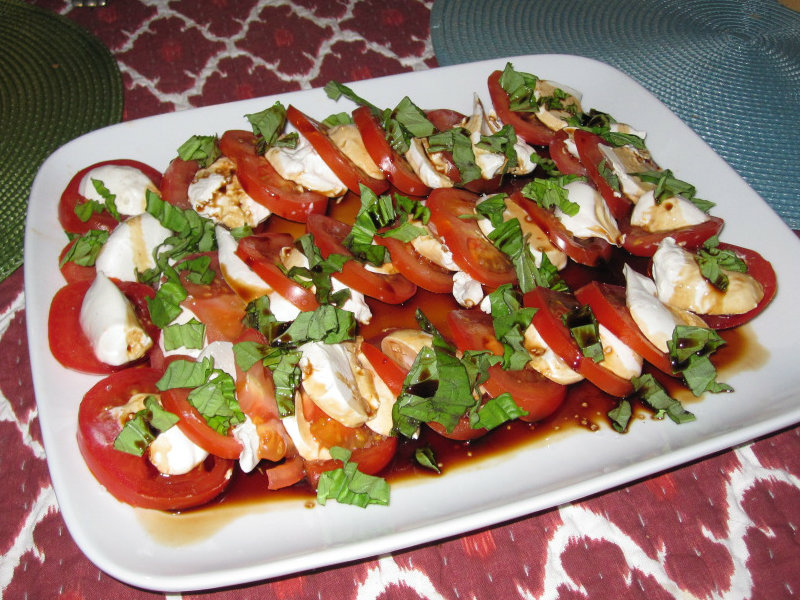
“I could never give up cheese.”
Based on the frequency that I hear this, I thought about making this post all about the reasons why you should stop eating cheese yesterday. I could have written about how detrimental animal cheese is to your health, delving into the link between dairy products and various types of cancer, including breast, ovarian and prostate. I could have discussed how dairy is actually really bad for your bones. After all, countries with the lowest rates of dairy consumption have the lowest rates of osteoporosis and that dairy has actually been singled out as the biggest cause of osteoporosis. I could have gone over the fact that a whopping 75% of the world’s population are genetically unable to digest dairy, yet we label this near universal human trait a defect and call it “lactose intolerance.” When we are babies all humans have an enzyme that allows us to digest our mother’s milk but we lose that enzyme between ages two and five because we are supposed to be weaned by then. Our bodies weren’t designed to be consuming milk into adulthood (not to mention the milk of another species!). I could also have also told you about how the veal industry is the byproduct of the dairy industry. In order to produce milk, cows–like humans–have to be pregnant and give birth. That means every glass of milk, every slice of cheese, and every scoop of ice cream is the product of a mother cow enduring a nine-month pregnancy only to have her baby immediately taken from her at birth so humans can consume her milk. If her baby is a male, he is slaughtered as veal. If her baby is a female, she is condemned to the same agonizing fate as her mother. To keep a dairy cow producing milk, she must constantly be pregnant, so just after her baby is torn away from her she is impregnated again. The painful cycle then repeats, year after year, until her body can give no more and she too is slaughtered.
But I’m not going to make this post about why you should give up cheese.
Instead, thanks to the brilliant book Artisan Vegan Cheese by Miyoko Schinner, I’ll simply tell you that you don’t have to give up cheese because you can make your own unbelievably delicious plant-based cheese. I have spent the past several weeks making eight different vegan cheeses from this book and, as a former dairy cheese lover myself, I am thoroughly impressed. Some of the recipes take a few minutes to prepare while others take a few weeks, even months, to culture but what consistently manifests are complex plant-based cheeses that are strikingly similar to their dairy counterparts. The first time I sampled the cashew-based mozzarella I was so startled at how similar it was to the dairy-based version that I had keep reminding myself that it was vegan and that I needn’t resist it. It was pretty wild.
Pictured above is a caprese salad with Schinner’s mozzarella recipe which I served during our at-home fancy date night this weekend. Below is a brie which I had out while our non-vegan friend was visiting from out of town. We all agreed it was a hit. It was creamy, fancy, and had that perfect melt-in-your-mouth texture. I’ve also got parmesan, provolone, gouda, two types of cheddar, American, and cream cheese in the works. (Click “read more” below for the recipe for American cheese.)
Incredibly Easy Pumpkin Chili
Believe it or not, I used to hate cooking. I resented having to follow directions for an activity that I believed was meant be creative. But every time I tried to get creative, tossing in a little of this, a dash of that, followed by a twirl, a curtsey, etc., the food was just a sorry disappointment. After too many failed dishes I knew I needed to follow instructions but I still wanted to feel like the dish was my creation. I was able to find a happy balance making dishes that called for just a few ingredients and minimal measuring. For those who are new to cooking, short on time, or just looking for a unique take on chili, this recipe delivers. It is so simple. All you have to do is chop a few vegetables and dump a few cans, but it also feels really creative and unusual because of the pumpkin. The result is a delicious chili that’s warm, comforting, and just a touch sweet.
Over time, you could also get more creative and try adding different colored peppers, other kinds of beans, or using sweet potato instead of pumpkin (see below for more ideas). With such good and simple flavors it would hard to mess this one up.
Ingredients:
1 onion, diced
2 cloves garlic, diced
1 red bell pepper, diced
1 can (15 oz) organic corn, preferably sweet
1 large can (28 oz) fire-roasted diced tomatoes
1 can pumpkin puree (NOT pumpkin pie puree)
1 can chickpeas, drained
1 can black beans, drained
1 tbsp chili powder
2 tsp cumin
1/4 tsp cayenne (optional)
1 cup vegetable broth or water (more if you prefer a thinner consistency)
Instructions:
1. In a large skillet over medium heat, saute the onion, garlic, and red pepper in 1-2 tbsp water or vegetable broth for about 10 minutes or until tender.
2. Stir in the remaining ingredients, increase the heat to high, and bring to a boil.
3. Immediately reduce the heat to medium-low and simmer for 15-20 minutes until heated through. Serve hot.
Variations to try:
– To make this chili thicker and heartier, add 2 cups cooked quinoa after step 2.
– Add fresh or frozen de-thawed greens, such as kale, spinach, collards, etc., while simmering during step 3.
– For a slightly sweeter chili, use canned sweet potato instead of pumpkin.
“I tried being vegan but…”
Below I examine to some of the common pitfalls of those who say a plant-based diet didn’t work for them.
1. “… I felt really weak/lost too much weight.”
What causes people to feel weak? This is often the result of not consuming enough calories. Animal products don’t have some magic source of energy. After all, people who suffer from anorexia and eat nothing but steamed chicken’s breast, sugar-free gum, and egg whites also experience weakness and lethargy. Being vegan doesn’t cause anyone to feel weak, not eating enough calories does. However, plants do have less calories than animal products so if you simply eliminate the animal products from your diet and don’t add other foods instead, then yes, you may start feeling lethargic, but that’s only because you are consuming less calories. To make up for the loss in calories, eat more! Eat larger portions, eat more frequently, or eat more nutrient and calorie-dense foods with your meals. Try adding healthful fats like avocado, walnuts, or flaxseeds to a salad. Make a smoothie with canned sweet potato, peanut butter, oatmeal, dates and soy milk. Add tofu and sesame seeds to a stir-fry. Snack on almonds and dates.
Bottom line: If you are feeling weak or losing more weight than you want, eat more.
2. “… my body just craved meat.”
Did it really, though? When you saw road kill did you instantly salivate? Did you find yourself looking at your dog and begin to wonder how she’d taste on the grill? My guess is no, you didn’t. No human craves a piece of actual animal flesh the way a true carnivore does. We’re repulsed by the idea of eating a piece of flesh that’s raw, bloody, and covered with feathers or fur. And we have to cook flesh before we eat it in order to make it non-lethal to our digestive system. When we say we’re craving bacon or steak what we’re actually craving is the salt, the fat, or the chewiness, not the flesh itself. Fortunately, the flavors people enjoy when eating animal flesh are plant-based (i.e. ketchup, mustard, horseradish, barbecue sauce, soy sauce, wasabi, relish, onions, pickles, garlic and countless herbs and spices) which means these cravings can be satisfied without taking another’s life. (See Tempeh Bacon and BBQ Tofu.)
I also wonder about this whole “listen to your body” idea. That’s not always such a good credo to live by. After all, people’s impulses also tell them to hit, rape, murder, steal, and destroy. Even the most well-behaving people have at some point had the impulse, even if just for a fleeting moment, to do something crazy or harmful. Should we really listen to every impulse simply because it’s there? I thought we humans prided ourselves on being rational and moral creatures. All humans are omnivores which means we are physically capable of eating plants and animals. It means we don’t have to eat animals. It means we have a choice. Every one of us is physiologically capable of surviving on plants. Why would we choose to harm when don’t have to?
Bottom line: Don’t base your actions on cravings and impulses alone.
3. “… my doctor told me I have to eat meat.”
You’d think that doctors would be experts in nutrition, but alas, they aren’t. In medical school students receive little to no education on nutrition. Instead the emphasis is on drugs and surgery for the treatment of disease rather than on prevention and the importance of lifestyle in good health. This is for a number of reasons, one of which is there’s little money to be gained in advocating prevention. The medical and pharmaceutical industries benefit when people need their services and products, not when they don’t. Bias plays a role as well. Most medical students and doctors grew up eating animal products and aren’t eager to find evidence that contradicts their own lifestyle and habits. After all, doctors used to advocate smoking cigarettes for patients because they smoked cigarettes themselves.
John Robbins, in Diet For A New America, explains: “Today, a similar situation exists with respect to the health consequences of a meat habit. Today’s physician is exposed to the same propaganda promoting meat and dairy product consumption as the rest of us, and he hasn’t the nutritional training that would enable him to evaluate these messages any more intelligently than we can. Furthermore, the meat, egg, and dairy industries are particularly keen on ‘educating’ doctors with their biased view of nutrition. The Meat Board, for example, has presented a series of extremely expensive full page color ads in the Journal of the American Medical Association, presenting a nutritional slant that one nutritional authority, Dr. Kenneth Buckley, did not find at all impressive. He called it: ‘slick and deceitful propaganda, coloring and twisting the facts in the most manipulative way.'”
Bottom line: Find a doctor who is vegan or at least wont let his or her own biases influence you.
4. “… I started gaining weight.”
5. “… I got tired of having to cook a vegan meal for myself and a non-vegan meal for my family every night.”
I hear this almost exclusively from women and it makes me really sad. As women we are so expected to be the care-takers and nurturers of those around us. Regardless of whether or not you like being in that role, being a nurturer does not mean giving others whatever they want at the expense of your time and your values. It really doesn’t matter what someone “expects.” No one is entitled to a particular ingredient or product every night, especially if they aren’t making it themselves, so if you are cooking meals for others they should be receiving them with gratitude. Period. Plus, when you make vegan food for others–which is without artery-clogging cholesterol, carcinogens, and harmful animal protein–you are also demonstrating that their health and their lives matter to you. If they still insist on making dietary choices that are harmful, they can do that on their own time, but no one has the right to force you to be an accomplice. Keep in mind though, this may be easier than you think.
Bottom line: As Colleen Patrick-Goudreau says, “the surest way to inspire people to eat delicious plant-based food is to make delicious plant-based food… If people eat food they find satisfying, filling, familiar, and tasty, they wont care if it has no animals in it.”
Addition: I just came across a wonderful essay but Will Tuttle, PhD which I recommend people read here.
Black Bean Brownies!
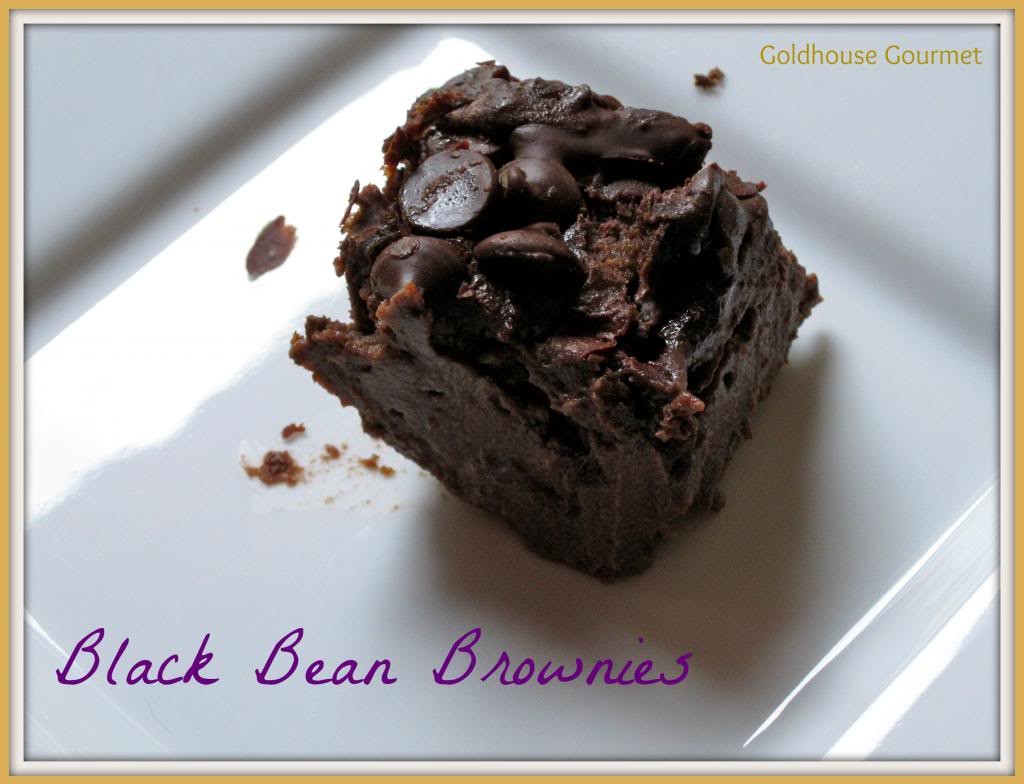
I know these sound a little weird, but trust me, they are THE. BEST. Because black beans have a neutral flavor they essentially function as the flour in this recipe. I’ve started eating them every day with my green breakfast smoothie.
Yes, I eat brownies every day. Don’t judge.
Besides the semi-sweet chocolate chips, these brownies have no processed sugar and are instead sweetened with dates, stevia, and a banana. Black beans are high in protein; an excellent source of folate, magnesium, phosphorus, manganese, and thiamin; and they are rich in dietary fiber. Unsweetened cocoa powder also provides protein, fiber, phosphorous, magnesium, and manganese as well as riboflavin, zinc, iron, potassium, and copper.
So, YEAH, I eat brownies every day.
Many of the black bean brownies recipes I’ve found use oil; however, I prefer to use water and don’t really notice a difference in texture. These brownies are more fudgey than cakie, which I like, but if you prefer cakie just add less water. I recommend using your own soaked, cooked, and drained black beans rather than canned beans to avoid excess water. (I used canned beans recently while visiting my in-laws down South and it resulted in a soupy batter. This was unfortunate as they were already skeptical enough about trying my crazy vegan brownies with beans so I was disappointed I made a batch that didn’t live up to their usual mouthwatering goodness. Arg! Regrets!!) If you refuse to heed my wise advice, then at least fully drain the liquid from the cans and maybe ease up on the amount of water you add. Also, be sure the cans say “no added salt.”
While I personally don’t want to mess with perfection, these would certainly also be good with some nuts like pecans and walnuts. Enjoy!!
Ingredients:
4 cups black beans
1 banana
15 medjool dates
1/2 cup unsweetened apple sauce
1 cup unsweetened cocoa or carob powder
1 tablespoon vanilla extract
1 cup water
1 cup semi-sweet vegan chocolate chips* (optional)
Instructions:
1. Preheat the oven to 350 degrees. Line a glass baking dish with parchment paper.
2. Put all the ingredients except the chocolate chips into a food processor. Pulse until creamy.
3. Spread the batter into pan and sprinkle the chocolate chips evenly on top.
4. Cook for 35-45 minutes, or until a knife comes out clean(-ish) after inserting. Don’t cook more than 50 minutes even if your knife comes out with batter. Just remove pan from stove and allow it to cool completely. Store in the fridge.
* Chocolate IS vegan! After all, cocoa comes from a bean. However, many lower quality chocolate companies add non-vegan ingredients like milk and milk fat. Higher quality dark chocolate chips are often vegan even if they don’t announce it on the package. They’ll be made with pure, simple ingredients: cocoa, cocoa butter, lecithin, sugar, and sometimes vanilla. So just check the back and read the ingredients. Here’s some more info from Food Empowerment Project on vegan chocolate that’s also slavery-free.
Thanksgiving
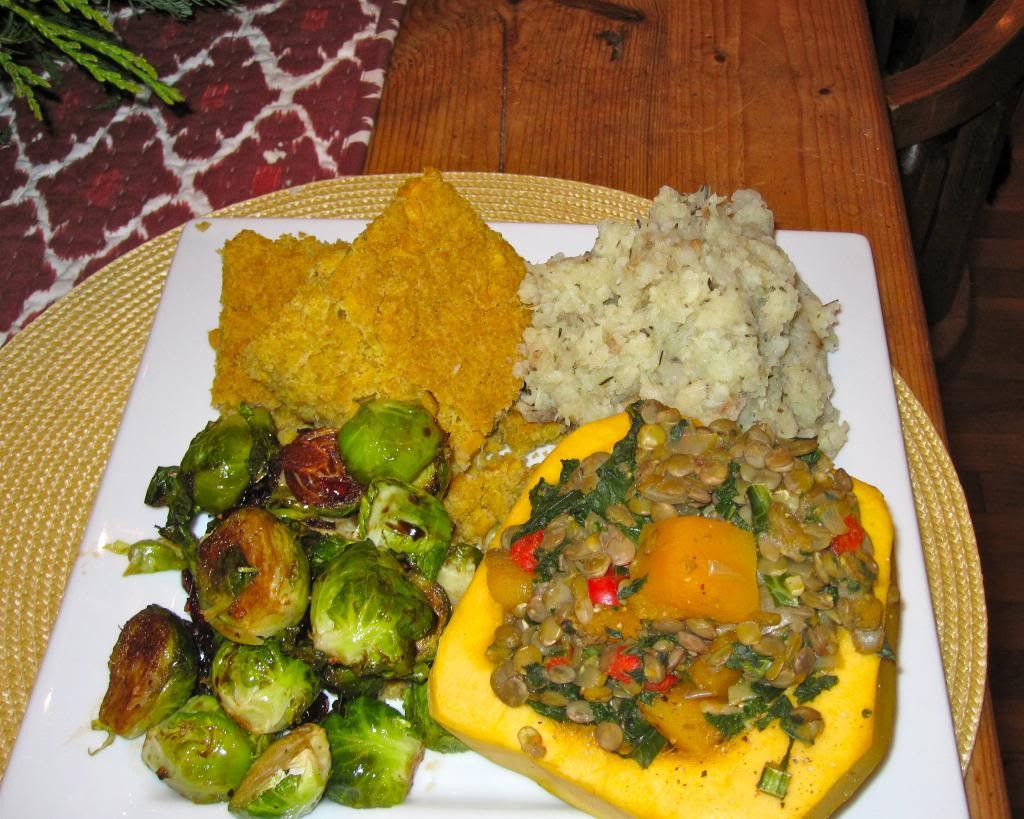

(note: You can prepare the recipe a day or two in advance and it will still be delicious. Just reheat in the oven at 350 degrees for 15-20 minutes.)
Ingredients:
2 cups dry green lentils
1 butternut squash
1 tbsp vegetable broth
1 red onion, chopped small
1/2 cup red pepper, chopped small
3 cloves garlic, minced
1 head kale, washed, de-stemmed, and chopped
4 tsp fresh ground black pepper
1 tsp fine ground sea salt
3-4 acorn squash
Instructions:
1. Rinse the lentils and then soak them in water overnight.
2. Peel and remove seeds from the butternut squash. Cut into small cubes and steam cubes for 10-20 minutes or until a fork easily pierces them.
3. Drain the lentils from the soaking water and then cook them in fresh water for 35-45 minutes, or until tender.
4. While lentils are cooking, warm vegetable broth in a medium pot or pan. Add onion and brown for 7 minutes over medium-high heat. Add pepper and stir together, cook for 7 minutes. Add garlic and stir for 5 minutes more.
5. Add chopped kale, stir in, and reduce heat to medium.
6. Once the kale is wilted, place pot ingredients in a large bowl with the cooked lentils and stir. Add salt and pepper–be especially generous with the pepper. Carefully fold in the steamed butternut squash and season to taste.
7. Split the acorn squash in half (slicing from top to bottom) and scrape out the seeds with a spoon. Slice off the skin. Place the squash halves–scooped side up–on a parchment-lined baking sheet and sprinkle with salt and pepper.
8. Roast at 350 degrees for 40 minutes* or until soft (they should be tender enough to easily slice through with a fork). Fill with peppered lentil mixture and bake 10-15 minutes more.
* The original recipe said to cook for 25 minutes but I found that to not be nearly enough and I had to stick them back in the oven. So, don’t take yours out till they are brightly colored and have begun to ooze a bit. The more you cook them the sweeter they’ll get, too.
Roasted Brussels Sprouts with Dried Cranberries + Balsamic Glaze


